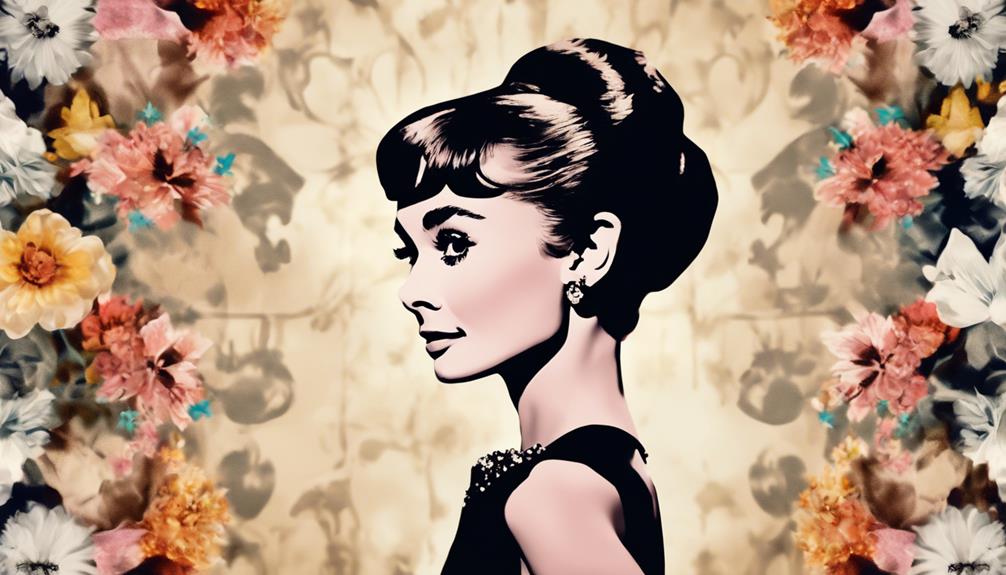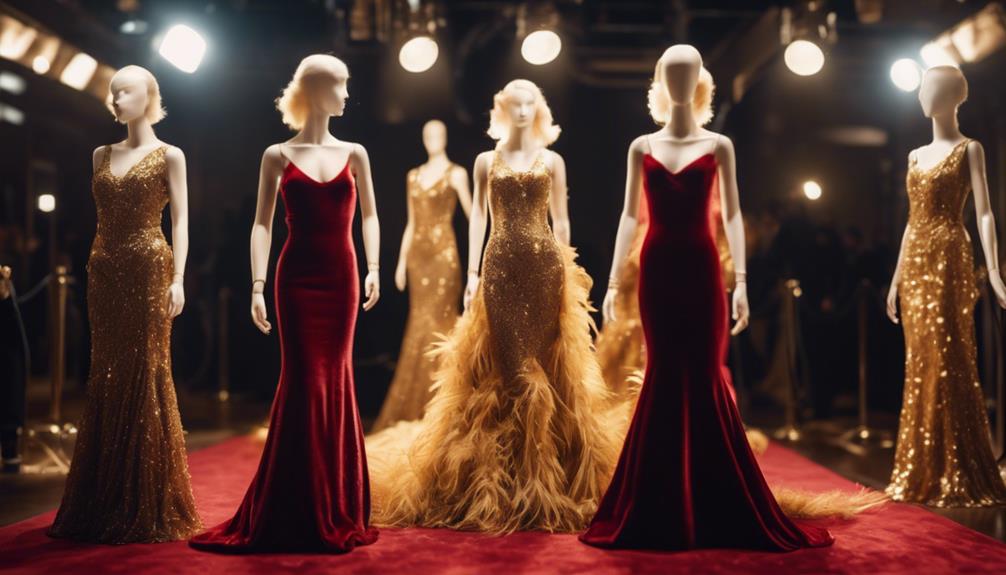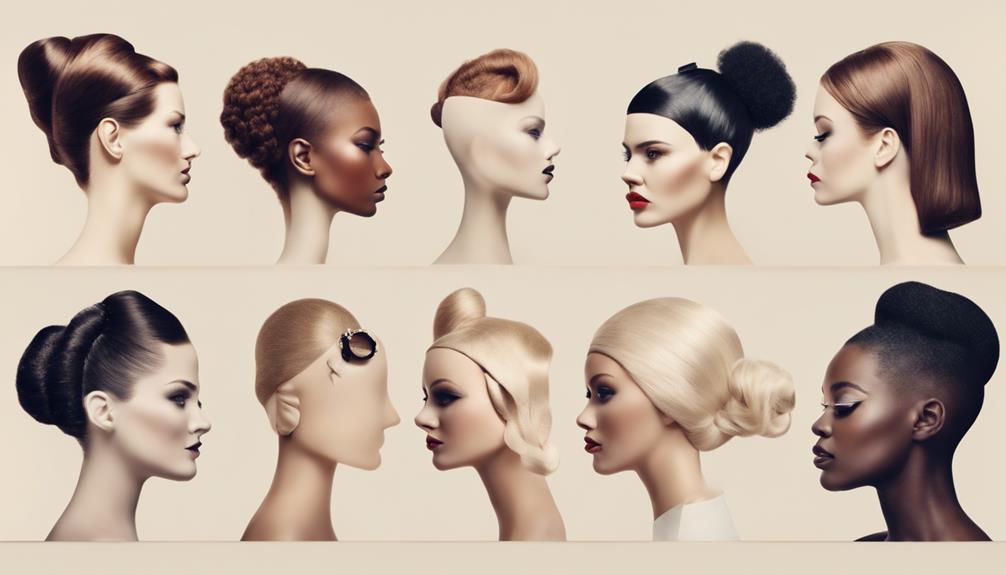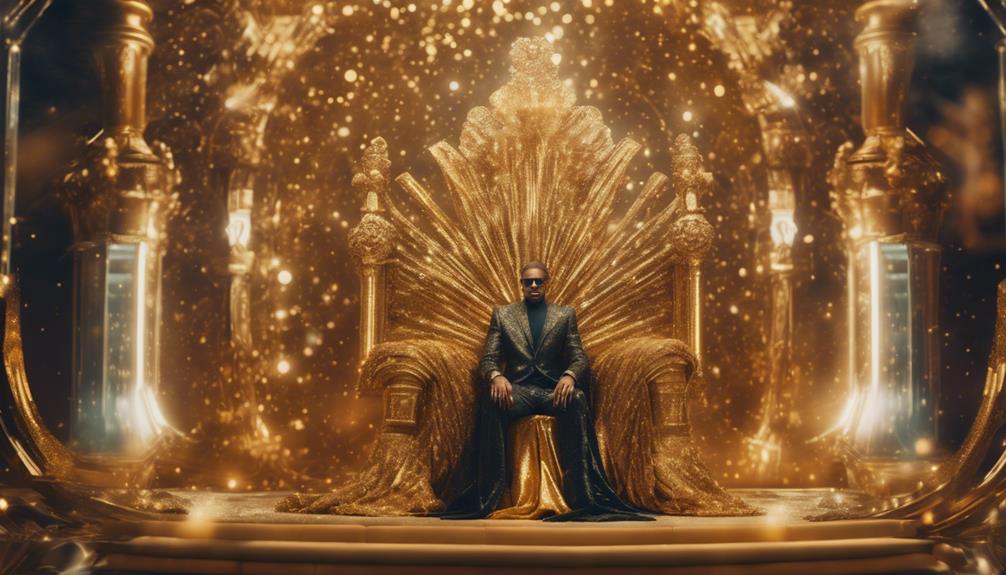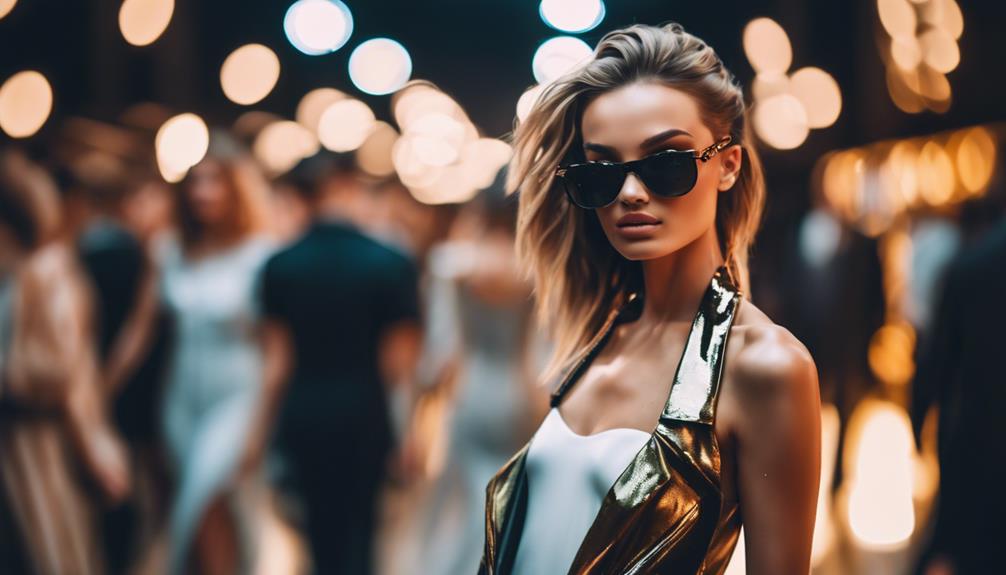From Coco Chanel to Rihanna, fashion icons have revolutionized style and beauty standards over the past century. Early 20th-century pioneers introduced modernity, while Hollywood glamour icons like Marilyn Monroe and Audrey Hepburn cemented timeless styles. The Mod era brought bold prints and vibrant colors, while modern icons like Zendaya and Rihanna promote diversity and inclusivity. The rise of social media has democratized fashion influence, allowing celebrities and influencers to shape trends and consumer behavior. As the fashion landscape continues to evolve, discover how style icons have transformed the industry and what the future holds for fashion and beauty.
Key Takeaways
• Early 20th-century pioneers like Coco Chanel and Elsa Schiaparelli liberated women from corsets and introduced modern approaches to fashion.
• Hollywood glamour icons like Marilyn Monroe and Audrey Hepburn captivated audiences with stunning beauty and iconic styles.
• The Mod era saw the rise of British Invasion style, characterized by mini skirts, sharp tailoring, and vibrant prints, popularized by icons like Twiggy.
• Modern icons like Rihanna and Zendaya blend diverse influences, challenge norms, and promote inclusivity and body positivity in the fashion industry.
• Social media has democratized fashion influence, allowing diverse influencers to redefine beauty and style, and empowering individuals to express themselves.
Early 20th Century Fashion Pioneers
During the early 20th century, a handful of visionary designers revolutionized the fashion landscape, leaving an indelible mark on the industry. Among them was Coco Chanel, a pioneer of modern fashion who introduced the little black dress and the Chanel suit. Her designs liberated women from corsets and introduced a more relaxed, modern approach to fashion.
Another influential designer of the time was Elsa Schiaparelli, a surrealist fashion designer who collaborated with artists like Salvador Dalí. Her designs were a fusion of art and fashion, showcasing her unique perspective on beauty and style.
Paul Poiret, a leading designer of the early 20th century, popularized the hobble skirt and harem pants, introducing exotic and opulent elements to fashion. These designers, along with others, transformed the fashion industry, paving the way for future generations of designers. Their innovative designs and creative vision continue to inspire and influence fashion today.
Rise of Hollywood Glamour Icons

As the spotlight shone bright on Tinseltown, Hollywood glamour icons like Marilyn Monroe, Audrey Hepburn, and Grace Kelly captivated audiences with their stunning beauty, charming on-screen presence, and iconic styles that continue to inspire fashion today.
These iconic women defined the essence of Hollywood glamour, setting fashion trends that would be emulated for decades to come. Their influence on fashion is still felt today, with their timeless elegance and allure continuing to inspire modern fashion trends and red carpet looks.
| Icon | Iconic Style | Timeless Influence |
|---|---|---|
| Marilyn Monroe | White halter dress | Sex appeal and glamour |
| Audrey Hepburn | Little black dress | Timeless fashion staple |
| Grace Kelly | Elegant sophistication | Influenced women's fashion |
| Hollywood Glamour Icons | Timeless elegance and allure | Inspire modern fashion trends |
Their iconic styles, from Marilyn Monroe's white halter dress to Audrey Hepburn's little black dress, have become ingrained in fashion history. As a result, their influence on fashion continues to be felt, with their timeless elegance and allure inspiring modern fashion trends and red carpet looks.
The Mod Era and Beyond

As the Mod Era evolved, it spawned a distinct style that permeated beyond fashion, influencing music and popular culture.
This subcultural phenomenon gave rise to British Invasion Style, which blended traditional British sensibilities with modernist flair.
Meanwhile, Psychedelic Fashion Emerges, and the Mod Culture Legacy continues to shape modern fashion trends, ensuring the era's lasting impact.
British Invasion Style
Regularly, British fashion enthusiasts of the 1960s enthusiastically embraced the British Invasion style, which was boldly characterized by mini skirts, sharp tailoring, and vibrant prints. This iconic style was heavily influenced by Mod icons like Twiggy and The Beatles, who popularized sleek, modern looks and edgy hairstyles. British designers, such as Mary Quant and Vivienne Westwood, played key roles in shaping the Mod era and beyond with their innovative designs.
The British Invasion style was more than just a fashion trend – it was a reflection of youth culture, rebellion, and individuality. The Mod style continues to inspire modern fashion, with its emphasis on self-expression and nonconformity. The impact of the British Invasion style on the fashion world has been lasting, influencing trends for decades to come. Its influence can be seen in everything from high-end fashion to streetwear, making it a true fashion phenomenon.
The British Invasion style's bold, modern aesthetic continues to inspire and influence fashion enthusiasts around the world.
Psychedelic Fashion Emerges
In the midst of the Mod era, psychedelic fashion emerged as a vibrant rebellion, bursting with bold prints, bright colors, and geometric patterns that electrified the streets of London and beyond. Influential style icons like Twiggy and Mary Quant popularized the psychedelic fashion trend with their innovative designs.
The use of fabrics like PVC, metallics, and synthetic materials characterized the psychedelic fashion movement, which extended beyond clothing to include accessories like oversized sunglasses, go-go boots, and statement jewelry. This era's fashion was all about experimentation and pushing boundaries, reflecting the youthquake's desire for freedom and self-expression.
Mary Quant's iconic designs, featuring bold prints and bright colors, epitomized the psychedelic fashion aesthetic. Twiggy's androgynous style, with her short hair and bold makeup, further solidified the movement's influence.
The Mod era's psychedelic fashion influence can still be seen in modern retro fashion trends and runway collections, a validation of the era's lasting impact on fashion.
Mod Culture Legacy
Beyond the Mod era's heyday, its cultural legacy continued to reverberate, influencing subsequent subcultures and informing contemporary fashion trends. The Mod movement's rebellious spirit and distinctive aesthetic have endured, shaping the style of subsequent generations.
Key elements of Mod style continue to inspire fashion designers and brands today, including:
- Slim-cut suits and shift dresses that exude modernity and sophistication
- Chelsea boots that add an edgy touch to any outfit
- Statement accessories like round sunglasses that make a bold fashion statement
- Bold patterns and bright colors that inject personality into any look
The Mod legacy remains relevant, with its influence extending beyond the fashion world to inform broader cultural and social movements. As a result, the Mod era's style icons, such as Twiggy and The Beatles, continue to inspire new generations of fashion enthusiasts, ensuring the Mod culture legacy endures.
Fashion's Diverse Modern Icons

In the domain of modern fashion, cultural fusion leaders and redefiners of beauty standards are reshaping the industry's landscape. These icons, with their unique perspectives and styles, are challenging traditional notions of beauty and fashion.
As a result, the fashion world is witnessing a significant shift towards inclusivity and diversity.
Cultural Fusion Leaders
Rihanna and Zendaya lead the charge as cultural fusion leaders, blending diverse influences and shattering traditional fashion norms with their bold, eclectic style. These modern icons use their platforms to promote inclusivity and diversity in the fashion industry, challenging conventional beauty standards.
By incorporating elements from different cultures into their fashion choices, cultural fusion leaders inspire global trends and celebrate individuality.
Some notable aspects of cultural fusion leaders include:
- Embracing diverse cultural influences in their fashion choices
- Promoting inclusivity and diversity in the fashion industry
- Redefining traditional notions of beauty and style
- Inspiring global trends and celebrating individuality
Through their innovative and eclectic fashion sense, cultural fusion leaders pave the way for a more inclusive and diverse fashion landscape. They inspire a new generation of fashion enthusiasts to embrace their unique style and celebrate their individuality.
Redefining Beauty Standards
Through their fearless self-expression and unapologetic individuality, modern fashion icons are redefining beauty standards, paving the way for a more inclusive and diverse representation of beauty. Rihanna and Zendaya, for instance, are championing diversity with their unique styles and backgrounds. By embracing their individuality, they promote inclusivity and body positivity, empowering others to do the same.
Lizzo and Paloma Elsesser, meanwhile, challenge traditional beauty norms by celebrating their curves and promoting self-confidence. Social media influencers like Winnie Harlow and Hari Nef use their platforms to advocate for diversity and representation in the fashion industry. As a result, the modern fashion landscape celebrates individuality and diversity, showcasing a wide range of beauty standards and styles through influential icons.
These fashion icons are breaking away from traditional beauty standards, promoting a more inclusive and diverse representation of beauty. By doing so, they inspire others to embrace their uniqueness and celebrate their individuality.
The Age of Influencers and Celebrities
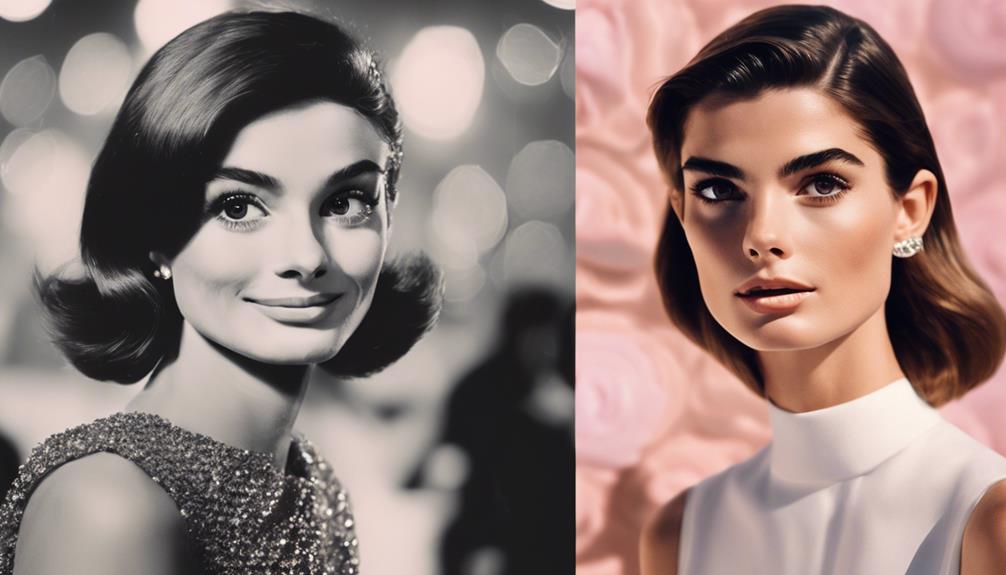
Celebrities and influencers have emerged as powerful tastemakers, spearheading fashion trends and styles that resonate with millions of followers worldwide. Through social media platforms like Instagram, they showcase their personal style, influencing consumer behavior and purchasing decisions in the fashion industry.
- Influencers and celebrities have become key figures in shaping fashion trends and styles in the modern era.
- Social media platforms like Instagram have provided a platform for influencers to showcase their personal style and influence millions of followers.
- Celebrities like Rihanna and Beyoncé have launched successful fashion lines and collaborations, further solidifying their status as style icons.
- The endorsement of brands by influencers and celebrities has a significant impact on consumer behavior and purchasing decisions in the fashion industry.
The fashion landscape has shifted towards a more inclusive representation of diverse influencers and celebrities, reflecting the changing values and trends of society. As a result, they've become essential components of the fashion industry, driving trends and shaping the way people dress.
Their influence is undeniable, and their impact on the fashion world will continue to be felt for years to come.
Redefining Beauty and Style Today

In today's digital age, a diverse range of influencers from various fields are redefining beauty and style, shattering traditional norms and paving the way for a more inclusive and empowering fashion landscape.
Modern fashion icons represent a broader spectrum of identities and backgrounds, reflecting the changing narratives and values in society. They embody qualities like inclusivity and empowerment, with figures like Rihanna and Fenty Beauty setting new standards.
Social media platforms have democratized fashion influence, allowing individuals to become style icons beyond traditional celebrities. However, face challenges as they navigate constant scrutiny and work to maintain relevance in a crowded landscape.
Despite these obstacles, modern fashion icons are redefining beauty and style, promoting a more diverse and inclusive representation of fashion. By doing so, they're empowering individuals to embrace their unique identities and challenging traditional beauty standards.
As a result, the fashion landscape is becoming more diverse, inclusive, and empowering, paving the way for a more progressive and accepting future.
Impact of Social Media on Fashion

Social media platforms have dramatically altered the fashion landscape, catapulting influencers to the forefront of trend-setting and redefining the way fashion is consumed, shared, and marketed. With millions of followers hanging onto their every post, influencer trendsetters have become powerful forces in shaping fashion consumption.
Through social media, brands can now engage directly with consumers, leveraging platforms like Instagram and TikTok to reach wider audiences. This democratization of fashion has led to greater diversity and inclusivity in trends and representations.
Some key impacts of social media on fashion include:
- Accelerated fashion cycles, with trends emerging and fading at an unprecedented pace
- Increased demand for new styles, driven by the constant need for fresh content
- A shift towards more diverse and inclusive representations in fashion
- The rise of influencer marketing, with brands partnering with popular influencers to promote their products
Frequently Asked Questions
How Did Fashion Evolve Over Time?
Over time, fashion has undergone significant transformations. From the structured silhouettes of the early 1900s to the more natural forms influenced by societal changes, each decade brought distinct trends.
The 1920s saw the flapper look, while the 1960s introduced bold designs. Historical events like World Wars and cultural movements shaped fashion evolution, reflecting changing societal values.
What Are the 5 Stages of the Fashion Cycle?
She explains that the fashion cycle consists of five distinct stages:
- Introduction
- Rise
- Peak
- Decline
- Obsolescence
During introduction, designers and influencers introduce new trends, which then gain popularity among early adopters in the rise stage.
The peak stage marks maximum saturation, followed by a decline in popularity and eventual obsolescence.
These stages illustrate the life cycle of fashion trends, from emergence to eventual replacement.
How Has Fashion Changed Over the 21ST Century?
As the 21st century unfolded, fashion underwent significant transformations. Coinciding with the rise of eco-awareness, brands shifted towards sustainable practices, incorporating eco-friendly materials and production methods.
The digital revolution reshaped the industry, with e-commerce and social media influencers dominating the scene.
Athleisure emerged as a prominent trend, redefining comfort and versatility in everyday wear.
What Are the Fashion Eras in Order?
The fashion eras unfold in a distinct sequence. First, the Victorian era emerged, followed by the Edwardian era, then the Roaring Twenties, the Great Depression era, and the World War II era.
Post-WWII, the New Look era, Swinging Sixties, Disco Seventies, and Power Dressing Eighties took center stage. More recently, the Grunge Nineties, Minimalist 2000s, and Sustainable 2010s have shaped fashion trends.
Each era is characterized by unique styles, influences, and societal changes that have contributed to the evolution of fashion.
Conclusion
As fashion's fascinating fabric unfolds, it's clear that style icons have spearheaded a sensational shift towards self-expression and diversity.
From pioneering pioneers to modern influencers, each era has woven its own unique thread into the rich tapestry of fashion history.
Today, the fusion of technology and fashion fuels a fearless, fast-paced industry, where fearless fashionistas forge their own paths, flaunting their flair for the fabulous.

